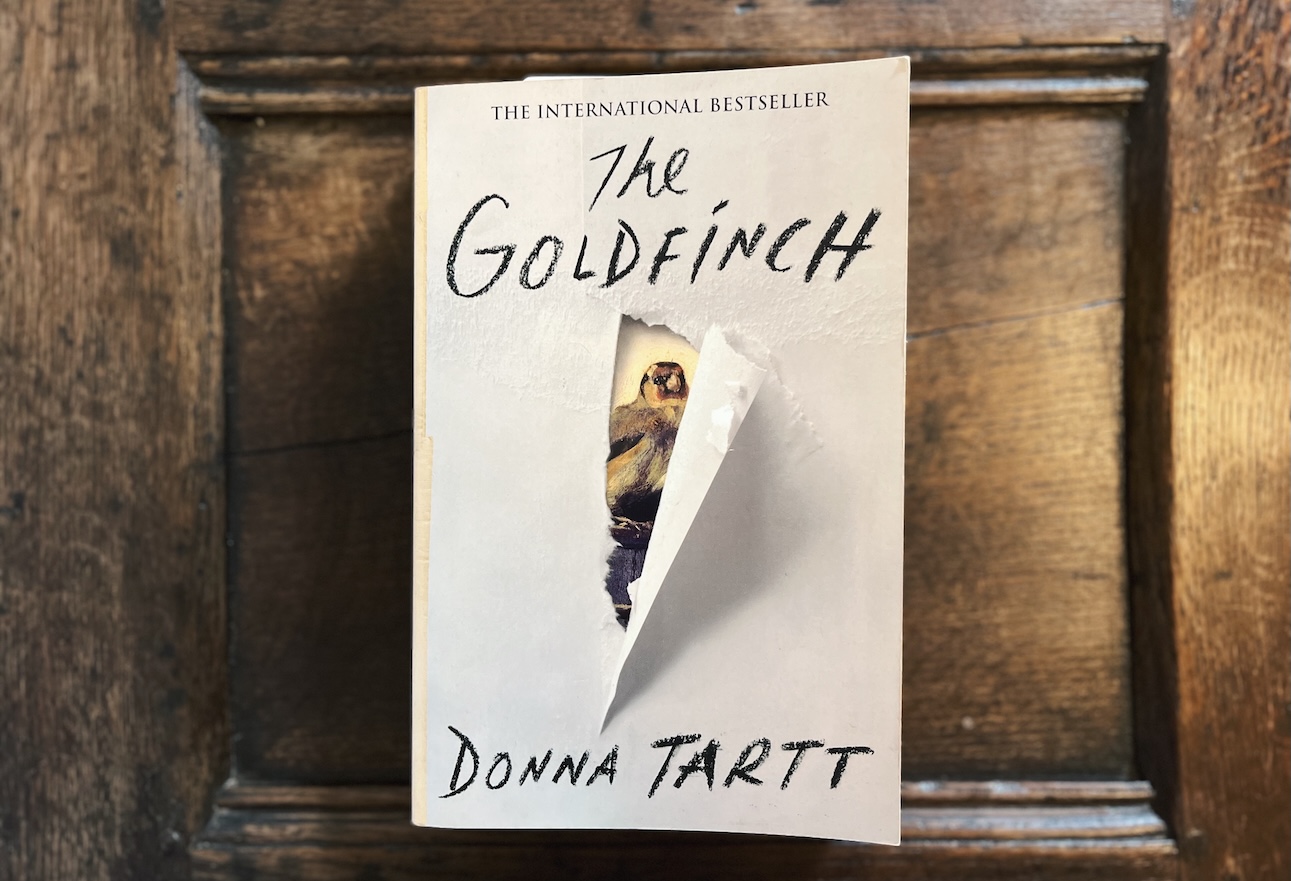Donna Tartt: Beautiful Windows Into the Transcendent

A few years back I developed a passage from Chuck Palahniuk’s Fight Club arguing that, despite making us feel as if we’re the centre of attention, social media does little more than isolate people and erode community; ultimately, I concluded, social media is detrimental for our mental health. From that I’m sure you can tell I’m more Luddite than social media lover—and recent research from the likes of Jonathan Haidt goes some way towards validating those instincts. In this short article I’m going to do something similar, corralling a few passages from Donna Tartt’s Goldfinch to argue that social media weakens our ability to appreciate beauty, dampening and even actively discouraging wonder.
One might say that Tartt’s Goldfinch is a sustained reflection on the visceral power of beauty, from oil on canvas to the season-less skies of Las Vegas. At the end of the novel, a man who’s given his life to restoring antique furniture says certain pieces of art “open up some much, much larger beauty that you can spend your whole life looking for and never find.” Here, and in many other passages, Tartt alludes to the transcendent nature of beauty, particularly in artworks—such as Carel Fabritius’ 17th century Goldfinch (pictured above). It’s why people describe losing themselves as they gaze at a great work; others recount the overwhelming feeling of connecting with the eternal.
But what becomes apparent throughout Tartt’s novel is that such experiences—what we might call encounters with the divine—only come with sustained attention, not fleeting glances. They are the result of appreciative and attentive study rather than unstudied indifference. Thus towards the middle of the novel, the narrator recounts handling Fabritius’ Goldfinch. “Even in the act of reaching for it,” he writes, “there was a sense of expansion, a waft and a lifting; and at some strange point, when I’d looked at it long enough, eyes dry from the refrigerated air, all space appeared to vanish between me and it so that when I looked up it was the painting and not me that was real.”
Whatever your theological or philosophical persuasion, if you haven’t been similarly moved by a masterful work of art then you simply haven’t been looking hard enough—or long enough. To adapt a phrase from Friedrich Nietzsche, if you haven’t ever felt a great work gazing back at you, then you haven’t given it the attentive stare it deserves, indeed the fixation it demands. The problem is, unlike Hobie or Theodore in Tartt’s Goldfinch, we rarely give our attention to anything for more than a couple of seconds or minutes at best—and social media is largely to blame.
Only our relatively shallow experience of beauty is ironically in part down to overexposure. Social media means we encounter too much—rather than too little—beauty. At the same time, however, social media discourages sustained attention and promotes wanton consumption. I don’t know what your Instagram feed consists of, but with I imagine most of us scroll past spectacles with little more than a double tap. The unrelenting rate at which we shift our attention from one wonder to another leaves us bereft of substantial encounters and experiences of the sublime. Social media’s voluminous wonders lure us into thinking that appreciation can happen in brief moments without sustained attention. Being able to see everything we end up experiencing nothing, unable to feel the rush of wonder because we greedily glut ourselves on beauty.
Towards the beginning of the novel, Theodore’s mother takes him to an art gallery. When they reach Fabritius’ painting she tells him, “This is just about the first painting I ever really loved,” when she was a child. She recounts how she pored over a reproduction of the painting in a library book. “I used to sit on the floor by my bed,” she continues, “and stare at it for hours, completely fascinated.” Her first encounter with a great painting would have to wait another decade, when she moved to New York at eighteen. “Pure bliss, perfect heaven,” is how she’d put it, “up to the neck in art books and poring over the same old slides (Manet, Vuillard) until her vision started to blur.” By contrast, social media and web promises us unprecedented access—and with it an unprecedented inability to be overwhelmed by beauty, and to know something of transcendence.
Commenting with a smile on those halcyon years, Theodore’s mother said it bordered on madness and frenzy. “I’d be perfectly happy,” she goes on, “if I could sit looking at the same half dozen paintings for the rest of my life. I can’t think of a better way to go insane.” Just six paintings says Theodore’s mother, masterpieces of course, could make her content, sated with beauty. Happy. Our social media feeds are stuffed to the gills with beauty, spectacles of human creativity—with boundless means experiencing reality at a deeper level. Why then is this generation, as well as my own, so desperately unhappy? It’s certainly not for lack of beauty. Perhaps it’s the lack of attention to that beauty, our inability to have profound experiences and wonder that carry us beyond this world.